
We organise a full programme of Sherry events in our restaurants [Bar 44 in Cowbridge, Penarth and Cardiff; Bristol opened in August this year] to cater for all Sherry lovers. For me, the best part of ISW is getting new people into Sherry: surprising them with fino and manzanilla - they get the biggest shock, as they don’t expect chilled, dry sherry; and then they come back for more!
These are my tips for organising your own Sherry tasting whether you’re a bar or restaurant owner or manager, or you have your own wine shop.
1. Staff should know their stuff
This may sound obvious, but you need to be prepared for every level of knowledge of the world of Sherry, from aficionados who are keen to show you their expertise, to someone who’s never drunk anything except a glass of Pinot Grigio.
In our case, all staff have to pass a test – waitresses will have a basic knowledge, bar staff will pass another test, and there are always 1 or 2 people around who have done a higher test, such as the Gonzalez Byass Sherry Master course with Antonio Flores. And I myself did the Sherry Educator course back in 2013, together with ISW founder Chelsea Anthon.
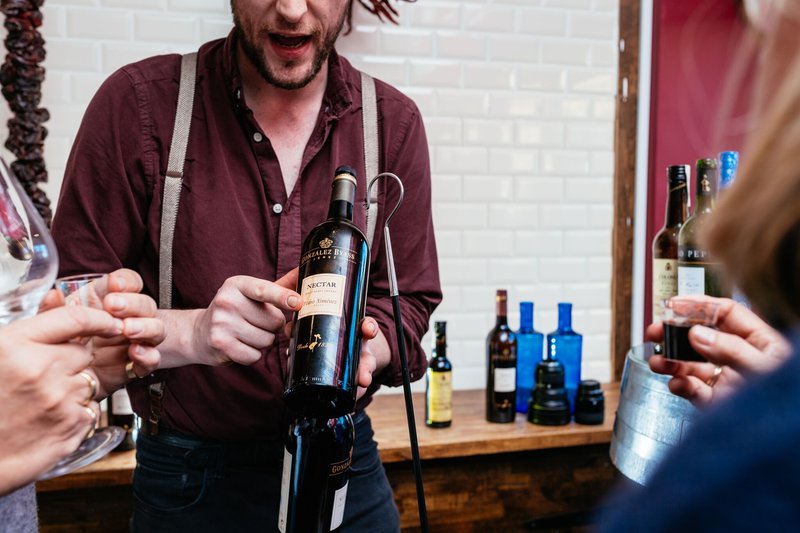
2. Break the ice
We always put a cocktail in a general tasting. Many people who come to a tasting don’t know each other, so the first 10 minutes are crucial. You need an ice-breaker - we have a tray of rebujitos and manzanilla, so we can explain to people that rebujito is made with manzanilla; they can either try this Sherry alone or in a cocktail.
Then people will start mingling – some come on their own, so we need to make them feel welcome. Our barmen can find out where they are from, if this the first time they’ve been here, and how they heard about the tasting.
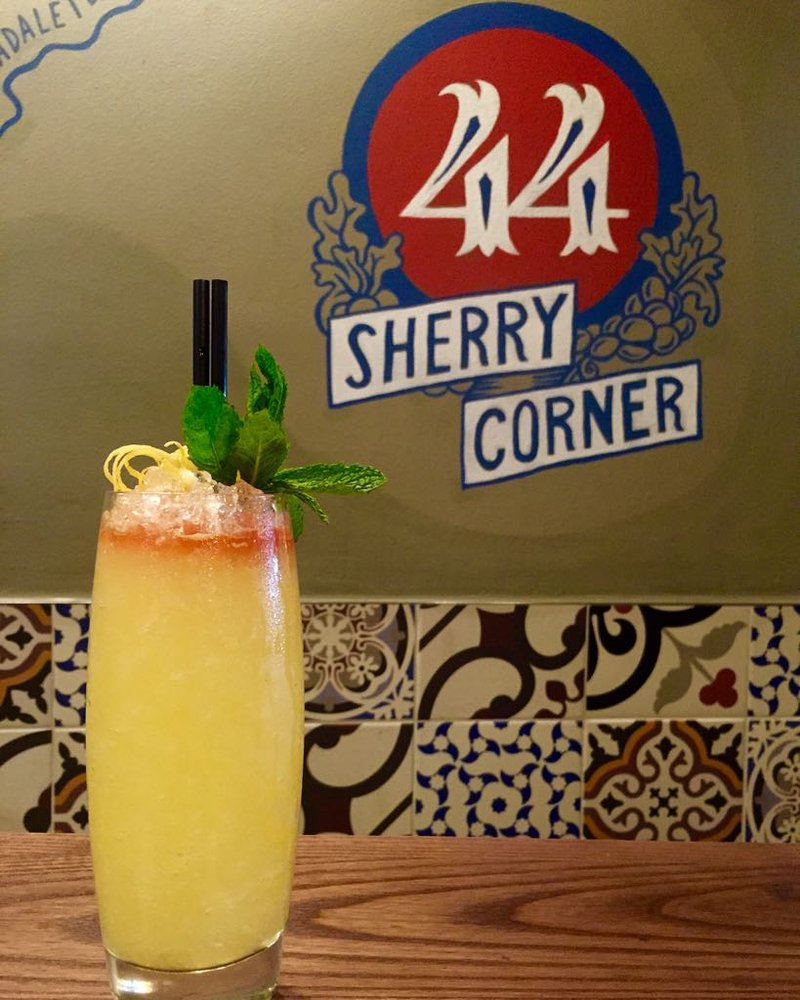
3. Keep it light
You should keep the mood light-hearted but informative. Make it fun, with plenty of anecdotes, and don’t be afraid to make fun of yourself.
Pacing is important, so keep it moving along – don’t spend too long on one topic or one Sherry, or people will start to lose interest. Also, you should try not to make your introduction too lengthy, although mentioning some basic facts about Sherry is crucial (see 4).
In terms of the length of the tasting: 1.5 hours is ideal to hold people’s attention, 2 hours maximum.
4. Explain the basics
It’s a really good idea to start off with a school-style lesson. This is essential for those who have never had a glass of Sherry in their life, so they can get their head around the idea. It’s especially true for the history and geography – that i t’s only made in one area, the Sherry triangle. You can talk about Sir Francis Drake capturing barrels from Cadiz, and centuries of trade with the British – this always throws up questions from the audience. Also, you need to explain, even briefly, how it is made - the solera-criadera system.
Ideally, put all your information into a simple slide presentation projected onto a screen. This gives a focus to your introduction – you can leave the slideshow to taste a wine, and then come back to it, and it’s easier than using hand-outs.
In terms of visuals, use a slide of a barrel with a glass end, to show how the layer of flor develops naturally. It’s one thing to try and explain to people the biological aging process, so key to sherry-making, but another to show a picture of it. “OK, now I get it!” they say. “So that’s the yeast that eats the sugar, that’s why it’s so dry.”
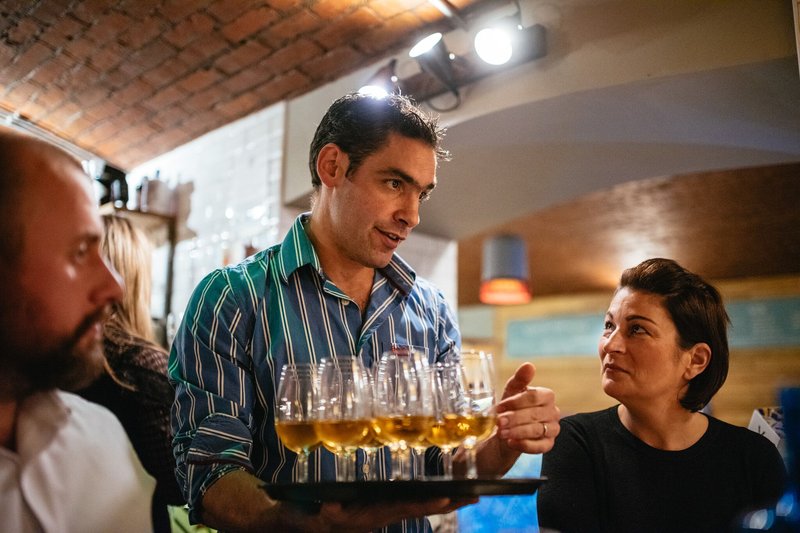
5. Order of Service
Have a tasting mat with circles marking the order of glasses (ie 1, 2, 3) and which bodega each Sherry is from, so that they know how many wines they’re going to drink, which ones and in what order.
Ideally, the wines should be served at optimum temperature; it’s also important not to keep people waiting for too long while you pour each wine (or your staff does). For example, if you’re doing a tasting for 30 people with 6 wines on your own, rather than having to spend lots of time pouring out 30 glasses between each type of Sherry being tasted, pour backward – pour all the sweeter ones first (say four types -amontillado to PX). Then people can see all the range of colours together, from golden through to dark, and smell them, too - this will get them chatting. At the last minute, pour the chilled ones – fino and manzanilla
6. Get your glassware
Use decent-sized white wine glasses - we always have copitas (traditional small Sherry glasses) available behind bar in case people ask, but we prefer to serve in larger glasses, to keep the aroma and get the maximum expression of the wine. It’s imperative to get across that people should treat Sherries as good wines. We show a slide with glasses of different sizes and ask people for their opinions, to get them warmed up.
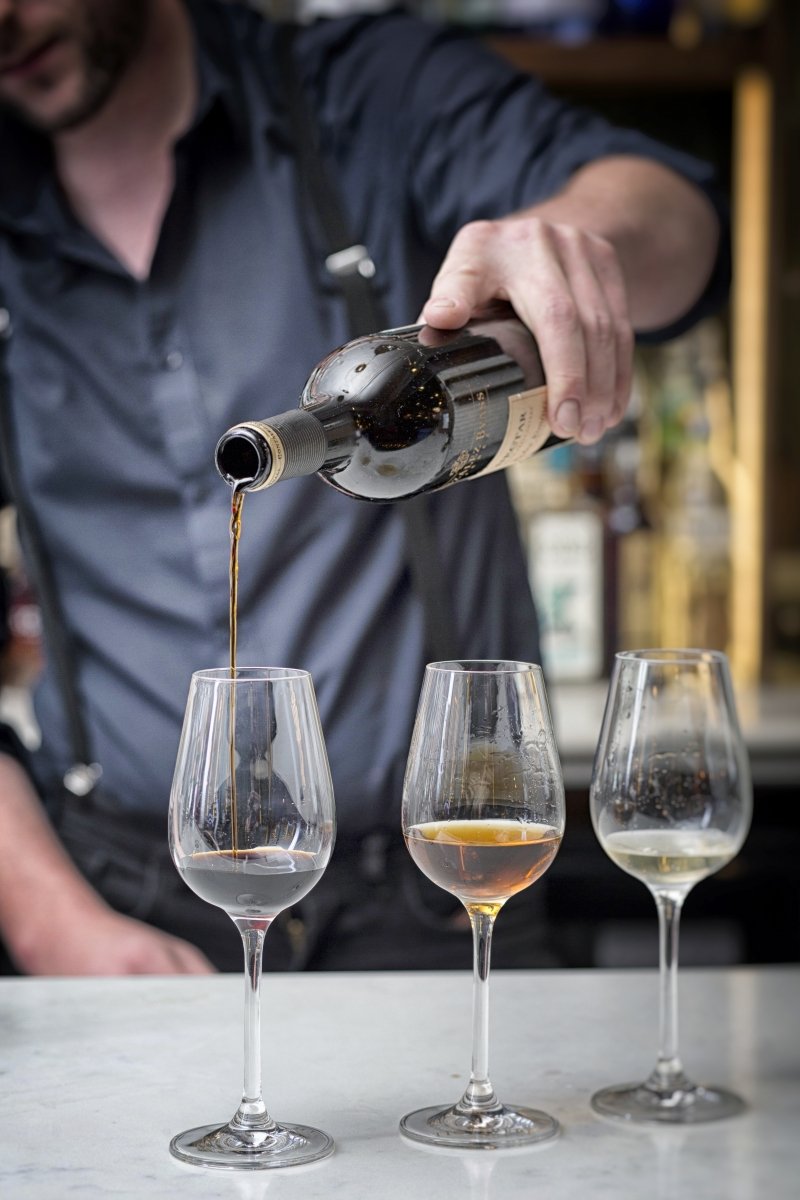
7. Eat, drink and be merry
The key is a great spread of food – people always want to eat - so have plenty of bowls and platters – olives, nuts, cheeses, charcuterie (jamón, chorizo, salchichón etc), as well as some non-Spanish food to show them that sherry goes with all types of food. I often use sushi – it’s ready-prepared, looks great, and pairs perfectly with dry sherries.
We talk about our produce, much of it local to Jerez – the jamón is always from Jabugo or Los Pedroches, Payoyo cheese from Sierra de Cádiz, gambas blancas from Sanlúcar.
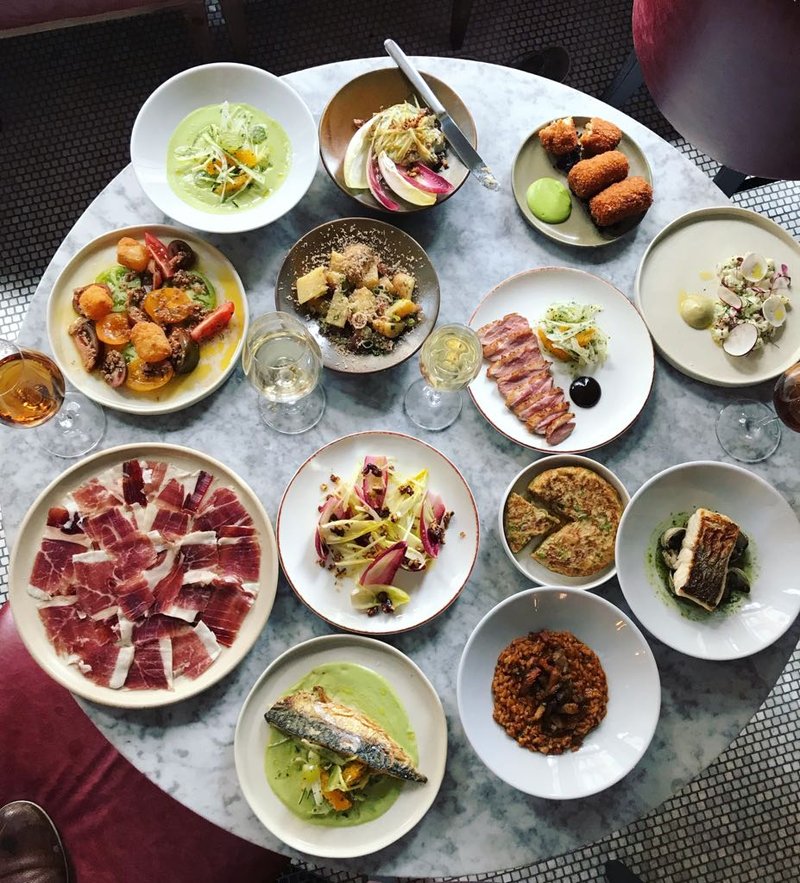
8. Match made in heaven
Sometimes we serve our fino and manzanilla accompanied by sourdough bread, marcona almonds and olives – and ask people if they can taste the brininess/saltiness and breadiness in the wine.
It’s also a good idea to offer some non-Spanish food, such as a hot and spicy dish – for example curry with amontillado. We might serve PX with chocolate truffles but also cabrales cheese (salty and sharp) on the same plate, to show the similar and contrasting flavours and they how both complement the wine. This gets people thinking about unexpected combinations at the end of the tasting.
9. Rounding off
At the end, finish off with how to store Sherry at home – where to keep it, how long the bottle can be open for – you want people to drink it with their dinner, not just on special occasions, or before dinner.
I tell people that I always have a bottle of dry Sherry in the fridge, so that I can have a glass with my fish and chips on a Friday night. Then they can see how versatile it is, in terms of matching. I say to them, next time you go to Tesco to do your shop, get a bottle of sherry and pair it with a dish at home – have fun with experimenting.
10. Stay - just a little bit longer
Try to get people to stay for dinner after the tasting (or to buy some Sherry if it’s a wine shop) – usually quite a few do this. I always say to people, “I’ll be around after the tasting in case you want to ask me anything.” People like to hang around to ask more in-depth questions, or about travel - how to get to Jerez from Cardiff, and where to go once they’re there.




